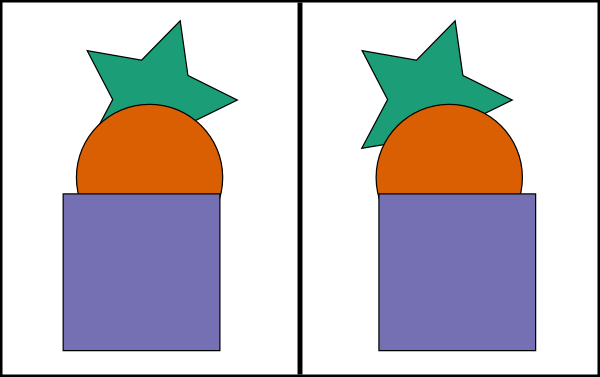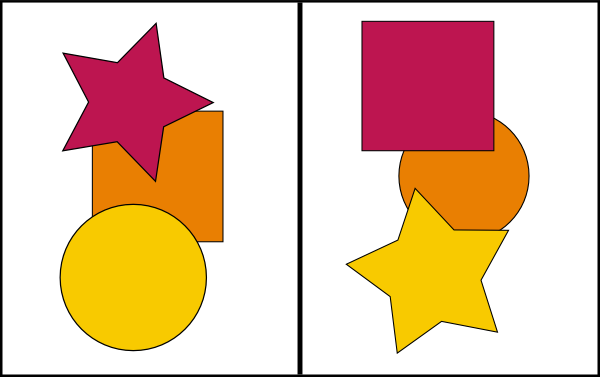The shortening days and end of daylight saving time mean that I’ve been walking a dog in the dark lately. I bought a headlamp because my neighborhood has no street lights and I wanted to keep a hand free and find my way around. Since I’m not used to wearing one, I was surprised that some textures had a “shimmering” appearance when illuminated by this lamp.
After a few walks I noticed that this was limited to certain materials, such as the dog’s fur and the abundant pine needles, all of which are made up of fine strands. I haven’t found a conclusive explanation for the effect yet. The shimmering goes away when I close either eye, so I assume that the effect is not caused by optics (e.g., this isn’t due to diffraction), and is also binocular.
We live in a 3D environment, and because of this a different image is captured by each eye. Our brains are used to this, and in the phenomenon “stereopsis” they take advantage of binocular disparity to make inferences about depth. When different images are presented to each eye through contrived means, interesting things can happen. Devices like the View-Master or Oculus Rift present different 2D images to each eye; when the differences correspond to what’s seen when looking at a real scene, stereopsis occurs and the brain constructs a 3D representation of a single scene.

If the differences between the images are weird (in the sense that they aren’t the result of depth) “binocular rivalry” occurs. When sufficiently different images are presented to each eye, our percept alternates between what is shown to each. These perceptual fluctuations don’t occur at once across the visual field; for large stimuli most observers report seeing one image interspersed with unstable blobs of the other. In areas of different luminance, the percept can appear to shimmer in effect called “binocular luster”. Michael Scroggins has a good blog post about rivalry that mentions luster and includes some demos.

When you wear a headlamp at night, the world is illuminated by a light source that’s roughly between your eyes. Based on shadows and specular highlights, your visual cortex determines that your left eye is seeing a world illuminated by a light to its right, while your right eye is seeing a world consistent with a light to its left. This is an uncommon arrangement, so it’s possible that the visual system has enough trouble for rivalry to occur. Most of what you see with a headlamp remains consistent with a familiar 3D world, so stereopsis still happens and you know what you’re looking at. I suspect that the unfamiliar arrangement of shadow and specularity can sometimes induce binocular luster. If binocular luster is responsible for this effect, it’s a rare example of rivalry occurring under (relatively) natural viewing conditions.
I did some searching and have yet to see another mention this phenomenon. Have you experienced the “headlamp illusion”? I’m pretty sure that this is all in my mind, but is mine the only one?